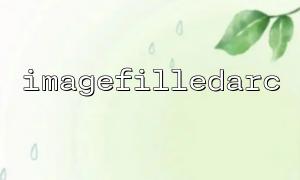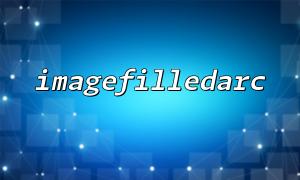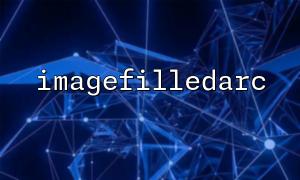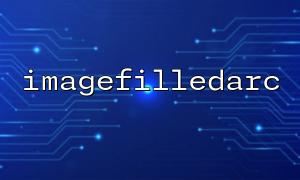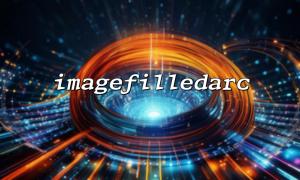In PHP, the imagefilledarc function is commonly used to draw filled arcs, but sometimes jagged edges can appear. This is mainly due to pixel discreteness and insufficient anti-aliasing. This article will explore how to avoid these jagged edges when using the imagefilledarc function and provide several common solutions.
The imagefilledarc function is part of the PHP GD library and is used to draw and fill an arc. Its function definition is as follows:
bool imagefilledarc ( resource $image, int $cx, int $cy, int $width, int $height, int $start, int $end, int $color, int $style )
$image: The image resource.
$cx, $cy: The center coordinates of the arc.
$width, $height: The width and height of the arc.
$start, $end: The starting and ending angles of the arc.
$color: The fill color.
$style: The style of the arc, usually IMG_ARC_PIE, IMG_ARC_CHORD, or IMG_ARC_NOFILL.
Using this function, you can draw various types of arcs on an image.
Jagged edges occur due to the precision of graphical rendering and lack of anti-aliasing. When we draw an arc, we typically approximate the curve as a series of small straight lines. The junctions of these lines may cause visual discontinuities, especially on low-resolution images. Since the PHP GD library does not have anti-aliasing enabled by default, these jagged edges become very noticeable.
An effective way to solve the jagged edge problem is to increase the resolution of the image. By using a larger image size to draw the arc, the smoothness of the arc will improve and the jagged effect will be reduced. This is because at higher resolutions, the edge smoothness becomes more apparent.
$image = imagecreatetruecolor(800, 800); // Use higher resolution
The imageantialias function in the GD library can enable anti-aliasing to improve drawing quality. Call imageantialias before using the imagefilledarc function to enable anti-aliasing:
$image = imagecreatetruecolor(500, 500);
imageantialias($image, true); // Enable anti-aliasing
<p>$color = imagecolorallocate($image, 255, 0, 0); // Red<br>
imagefilledarc($image, 250, 250, 400, 400, 0, 180, $color, IMG_ARC_PIE);<br>
By calling imageantialias($image, true), the image will be rendered smoothly, reducing jagged edges.
If the arc you are drawing is close to a horizontal or vertical line, adjusting the starting and ending angles can help align the pixels along the arc's edge better, thereby reducing jagged effects.
imagefilledarc($image, 250, 250, 400, 400, 0, 180, $color, IMG_ARC_CHORD);
By adjusting these angles, you can avoid irregular pixel arrangements on the edges and reduce jaggedness.
In some cases, the fill color of the arc might be too solid or distinct, making the jagged edges more noticeable. You can try using gradient colors or blending some transparency to create a more natural transition, thus masking the jagged effect.
$gradient = imagecolorallocatealpha($image, 255, 255, 255, 50); // Semi-transparent white
imagefilledarc($image, 250, 250, 400, 400, 0, 180, $gradient, IMG_ARC_PIE);
By adjusting transparency or color, the image edges will be smoother and the hard boundaries of the arc will be avoided.
